If you're anything like me, your knowledge of such things more or less begins and ends with the Big Dipper. But Tony Cook, Los Angeles-based Griffith Observatory’s astronomical observer, tells me the uninitiated don't need a telescope (or even an observatory, though many do offer educational star shows) in order to become adept stargazers. In fact, he and Alan MacRobert, senior editor at Sky and Telescope magazine, both advise against using one until you've educated yourself the old-fashioned way. They recommend reading the book NightWatch to put your heavenly discoveries in a greater context, and Cook additionally says you should pick up a copy of Night Sky With the Naked Eye. "The ancient constellation stories help you remember what to look for," he says.
In the interim, both suggest looking heavenward with just a pair of binoculars. "With binoculars, you can see craters on the moon, the crescent phase of Venus when it is at its closest to the Earth—as it will be at the end of August—and the four largest moons of Jupiter," Cook says. "Additionally, you can get fine views of many star clusters, nebulae (celestial clouds of glowing gas) and several galaxies."
Below, he and MacRobert share tips on how, exactly, you might be able to spot these and other celestial sites in the skies this summer.
Keep reading for a little stargazing 101.
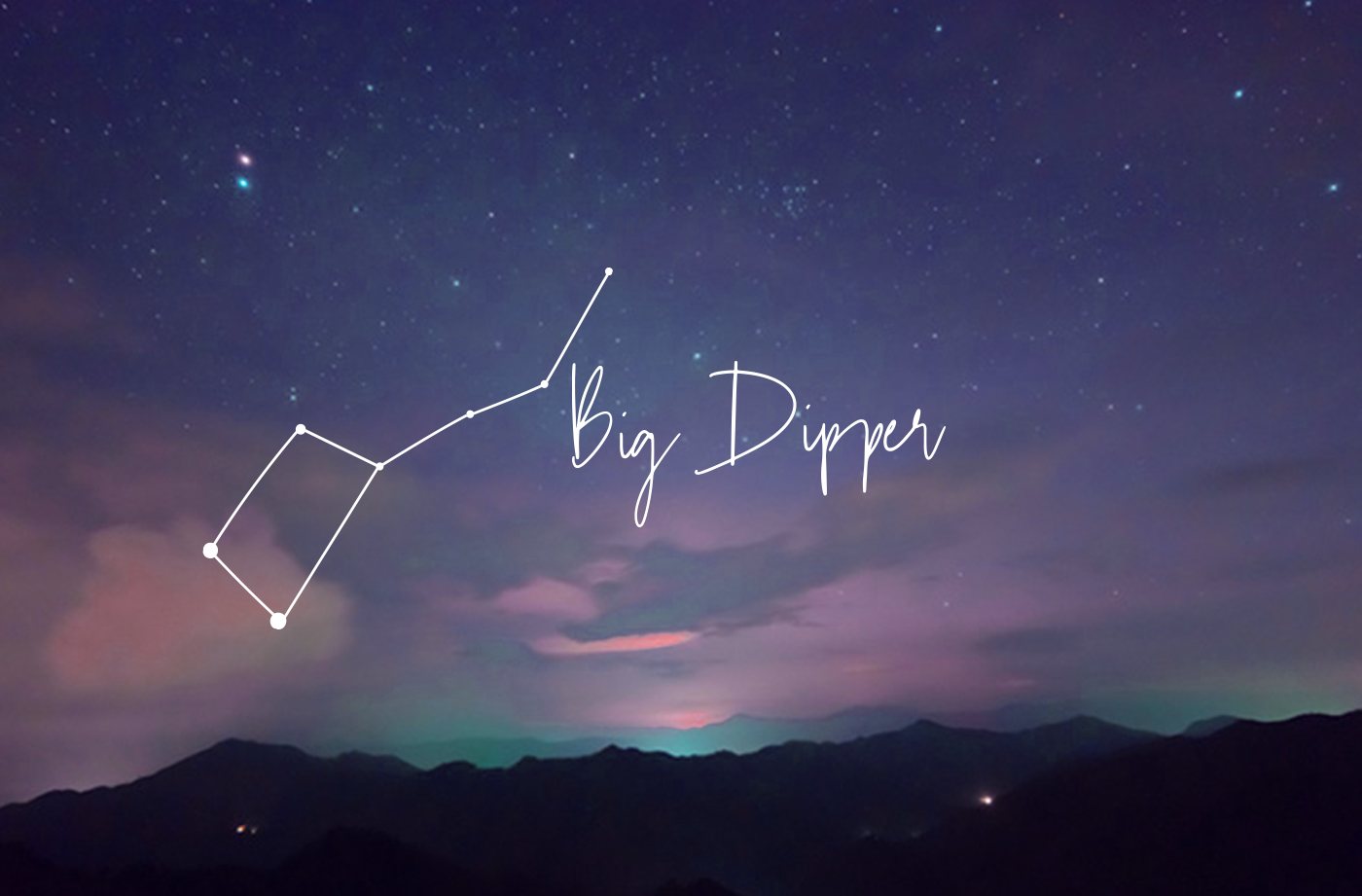
The Big Dipper
"The Big Dipper consists of the seven brightest stars of the sprawling constellation Ursa Major, or the Large Bear," says Cook. "Four are in a broad trapezoid, making its 'bowl,' and three stars are in a broad, nearly flat triangle that make it's 'handle'." In the summer, he says, the Big Dipper can be spotted bowl-down and above the horizon toward the north-northeast.
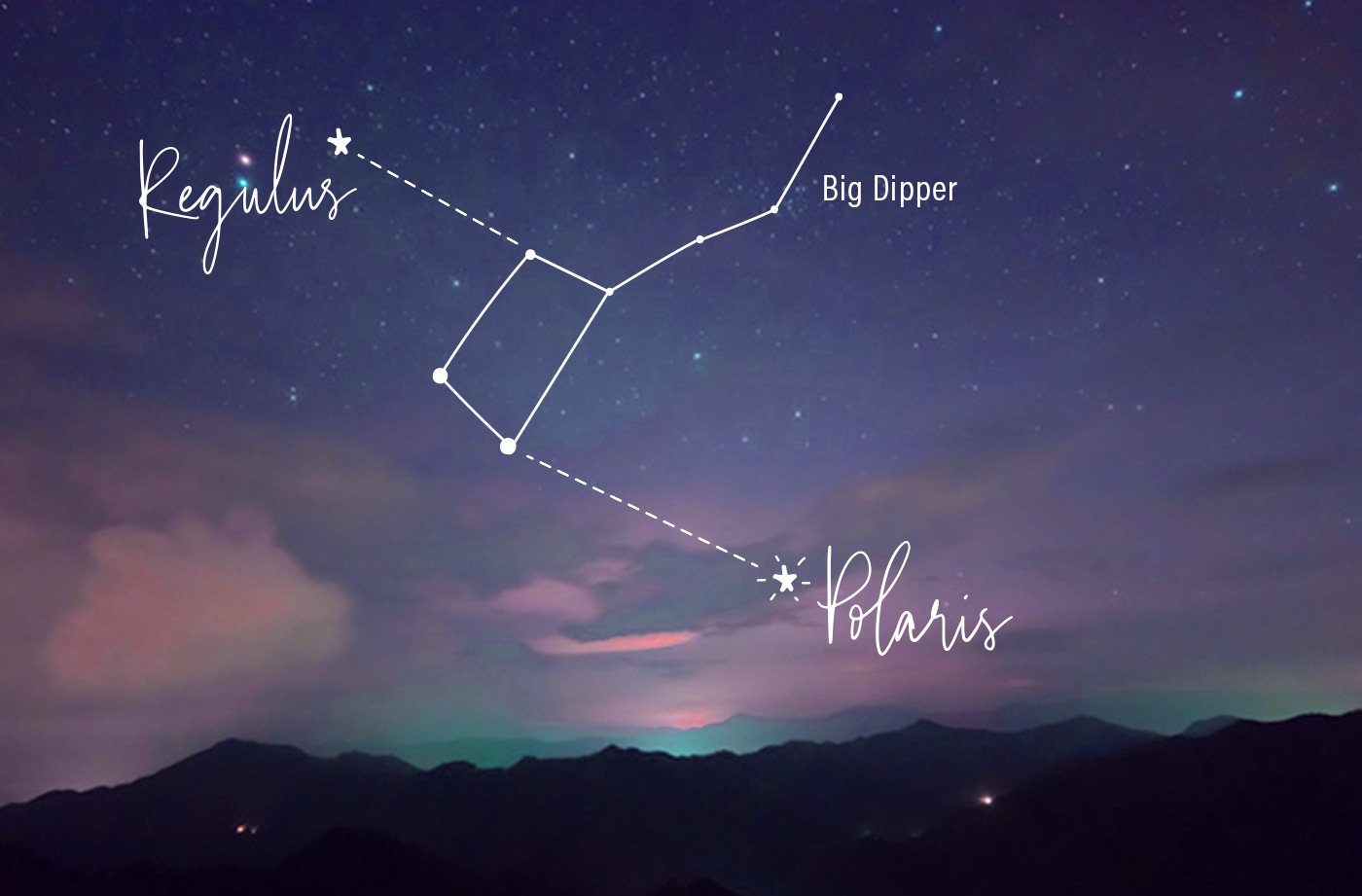
The North Star and Regulus
"Lines drawn through stars of the Big Dipper's 'bowl' or 'blade' point to the North Star—AKA Polaris," says Cook. Look in the other direction, he says, and these stars point to the bright star Regulus of the constellation Leo the Lion.
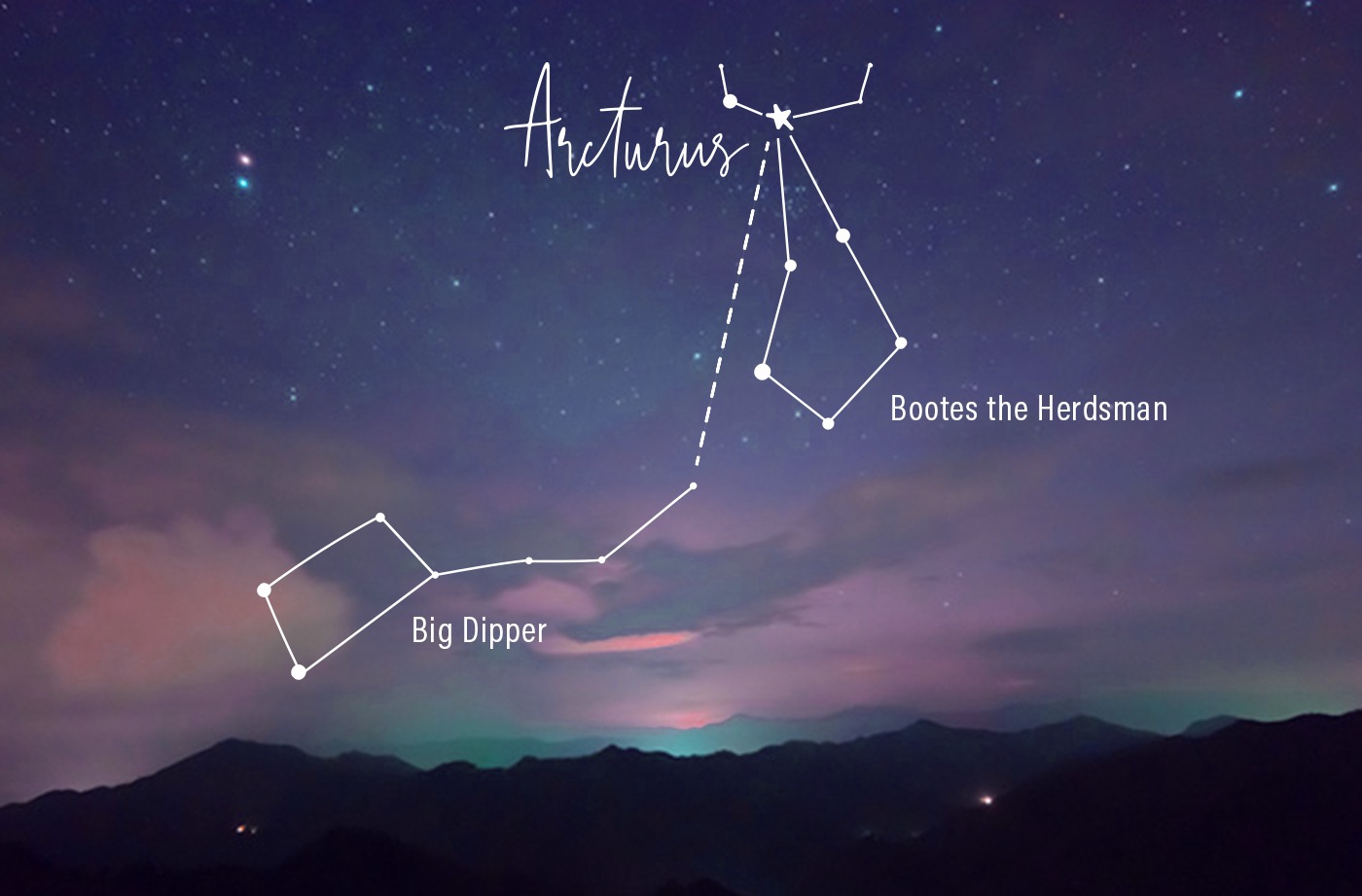
Arcturus and Spica
"The handle of the Dipper arcs away from the bowl to the bright stars Arcturus, located in the constellation Bootes the Herdsman, and then to Spica, located in the Virgo the Maiden constellation," Cook says. To help you remember this, he says to use this handy phrase: "The curve of the handle helps to 'arc to Arcturus and spin off to Spica.'"
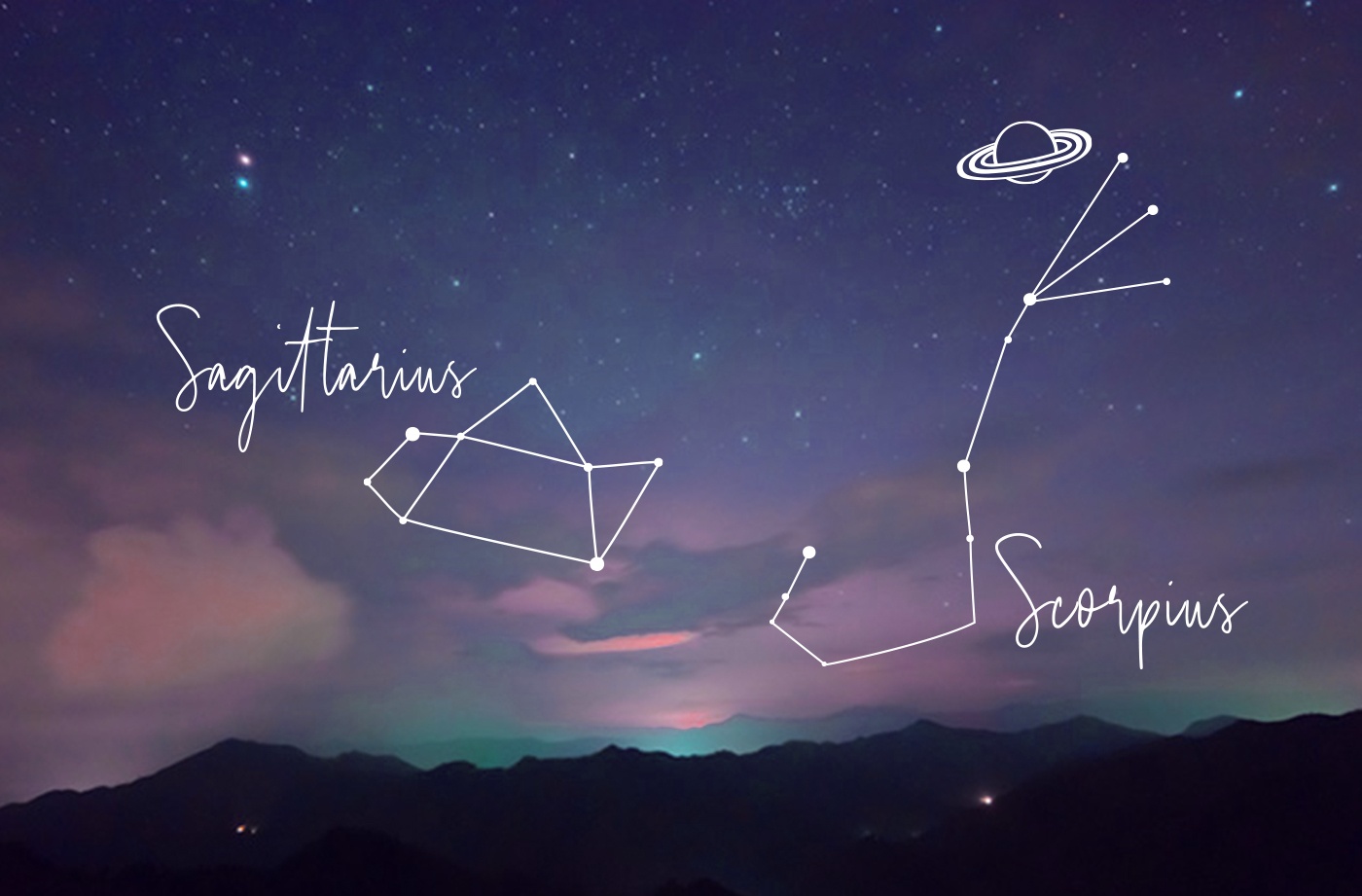
Scorpius and Sagittarius (aka "The Teapot")
"In the summer, the key constellations—seen by looking above the southern horizon—are Scorpius the Scorpion and the teapot-shaped Sagittarius the Archer," says Cook. To help you locate the latter, MacRobert advises finding Saturn first—Sagittarius is below it. "The ancients pictured him as a centaur shooting an arrow, but to modern eyes his stars form a very realistic teapot shape," he explains. "The Teapot is sitting nearly upright, with its handle on the left and its triangular spout on the right. It’s about the size of your fist at arm’s length."
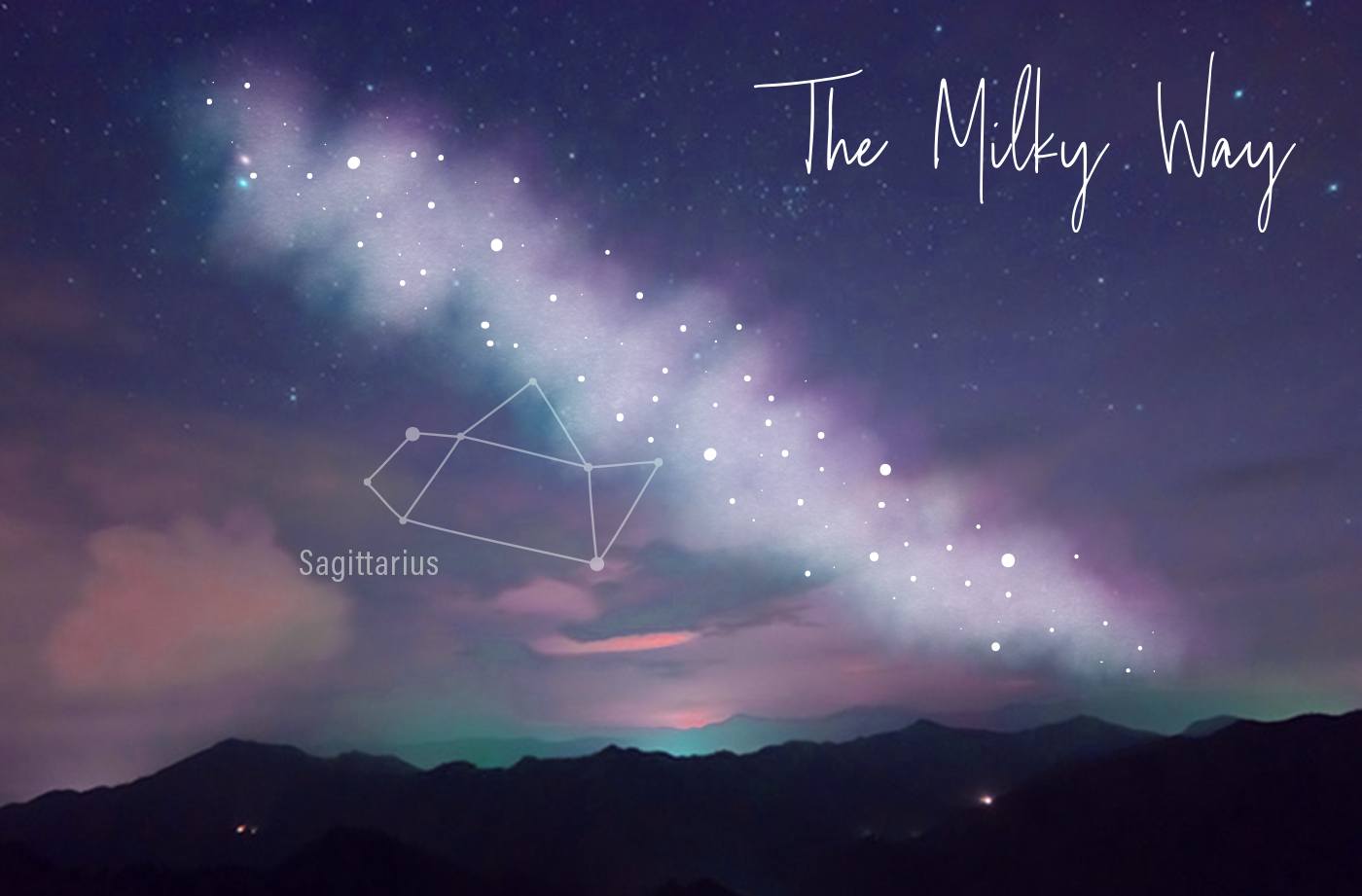
The Milky Way
"If you have a really dark sky, your breath will be taken away by the sight of the summer Milky Way extending diagonally upward from lower right of the Teapot to high above it," says MacRobert. "The brightest patch of the Milky Way, the Large Sagittarius Star Cloud, looks like a puff of steam just above the Teapot’s spout."
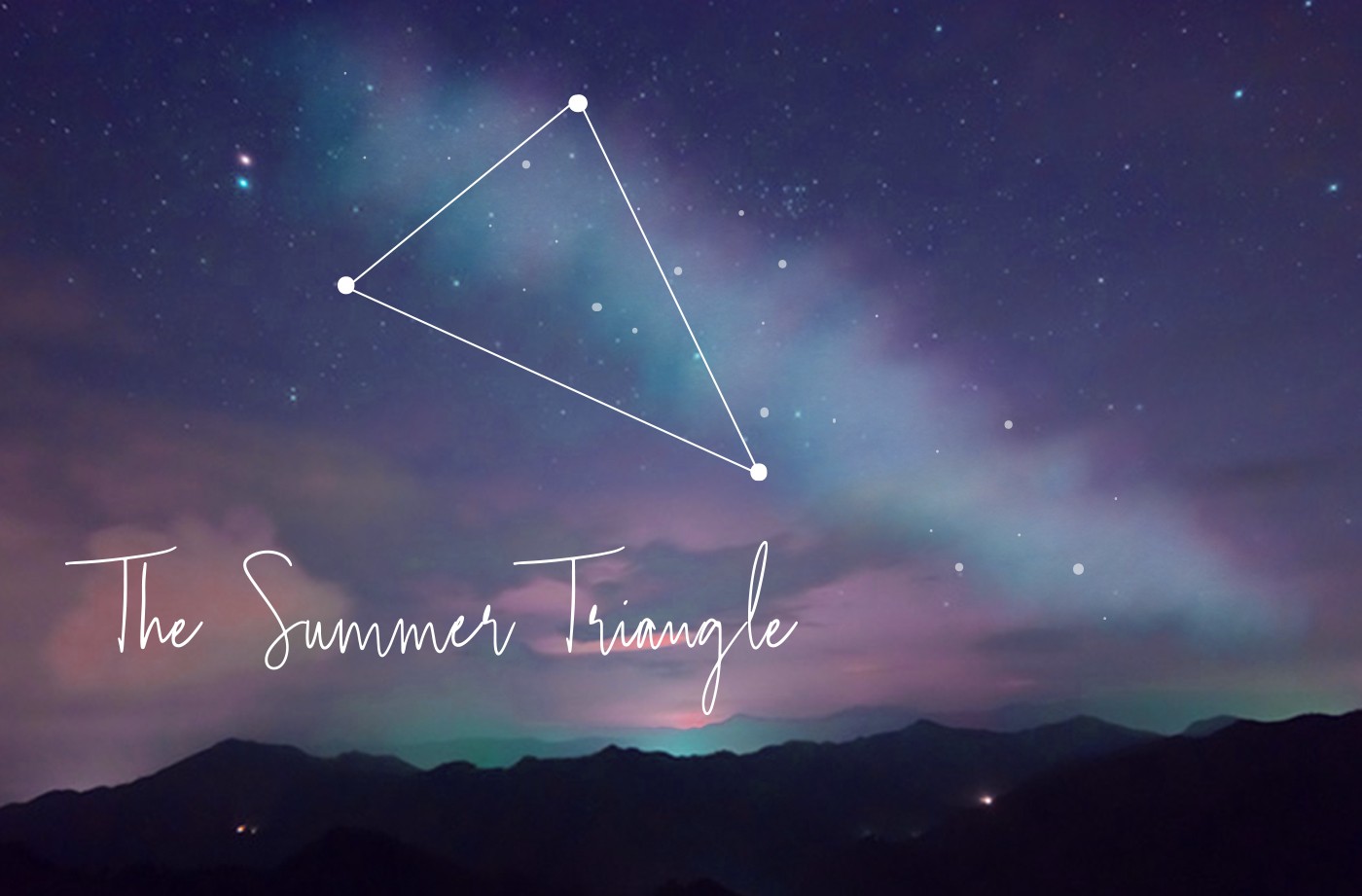
The Summer Triangle
"The stars Vega, Deneb, and Altar—which are members of the constellations Lyra the Lyre, Cygnus the Swan, and Aquila the Eagle—are called the Summer Triangle," says Cook. It's seen by looking east in the early summer, and it moves overhead by summer's end. "They help to orient the observer in that part of the sky," adds Cook, who says that once you can locate and identify these "keys," finding the smaller constellations within the Summer Triangle can be easy. "The constellations Sagitta the Arrow and Delphinus the Dolphin are dim and tiny, but they can become favorites once you spot them."
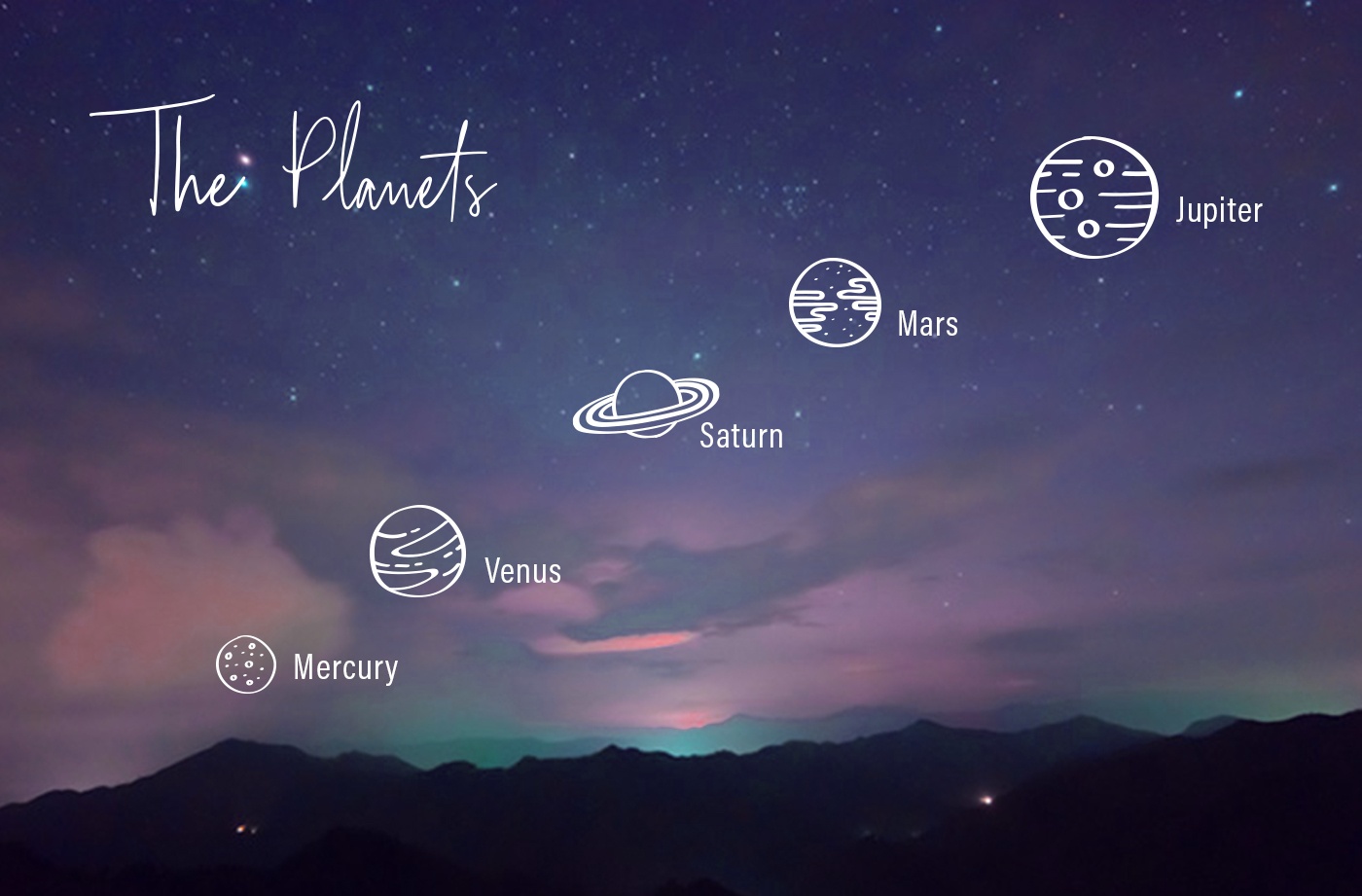
The Planets
Except for distant Uranus and Neptune—which require some skill with a telescope to identify, says Cook—the planets are surprisingly easy to see. In fact, he tells me, Venus, Jupiter, and Mars appear brighter than any star after the sun, or any other object after the moon. Saturn is also bright, he says, although fainter than Jupiter.
Venus

{{post.sponsorText}}
"Start with Venus, long called the 'Evening Star' for its brilliance—though of course it’s not a star, it’s a planet," says MacRobert, who adds that it's the brightest of all of the planets due to its proximity to both the sun and Earth. "It’ll be the first 'star' you see coming out in the west as twilight fades." In July, he says, look for Venus shining low in the west at twilight—it'll get lower and harder to see in August. On July 14, says Cook, Venus will look like a star directly below the moon.
Mercury
Though Mercury is closer to the sun than Venus (meaning it's brightly lit), MacRobert explains that it appears dimmer due to the fact that it's covered with dark gray rocks (versus Venus' bright white clouds). Plus, it's farther from the Earth and smaller than Venus.
Currently, Mercury is visible after sunset, says Cook. "It will be seen between Venus and the horizon until late July—an unusually long appearance," he says. To locate it, advises MacRobert, hold your fist out at arm’s length and look for Mercury about one-and-a-half fist-widths to Venus’ lower right.
Mars
"As the evening grows late, look about three fists to the lower left of Saturn and the Teapot for the real star of this summer’s show: Mars, shining bright, fiery yellow-orange," says MacRobert. "It's currently passing closer to Earth than it has in 15 years. It will grow slightly brighter until it’s at its closest in late July, then it will gradually fade in August and September."
Jupiter
"Next target: Jupiter," says MacRobert. "You can’t miss this one—it’s the bright point shining in the southwest during dusk and after dark—pretty high in July, lower in August." Cook adds that it has a yellowish cast.
Look left of Jupiter by roughly three fists at arm’s length, says MacRobert, and you’ll find the orange-red supergiant star Antares. Around Antares and to its right are other stars of the constellation Scorpius.
Saturn
Next, look two or three fists left of Antares, and there’s Saturn, says MacRobert. "It glows pale yellow-white, due to yellow compounds in its upper atmosphere," he says.
Inspired to enjoy more natural wonders this summer? Try tackling the best waterfall hikes in every state, visiting one of these millennial-pink beaches, or diving into the world's best scuba destinations.
Loading More Posts...